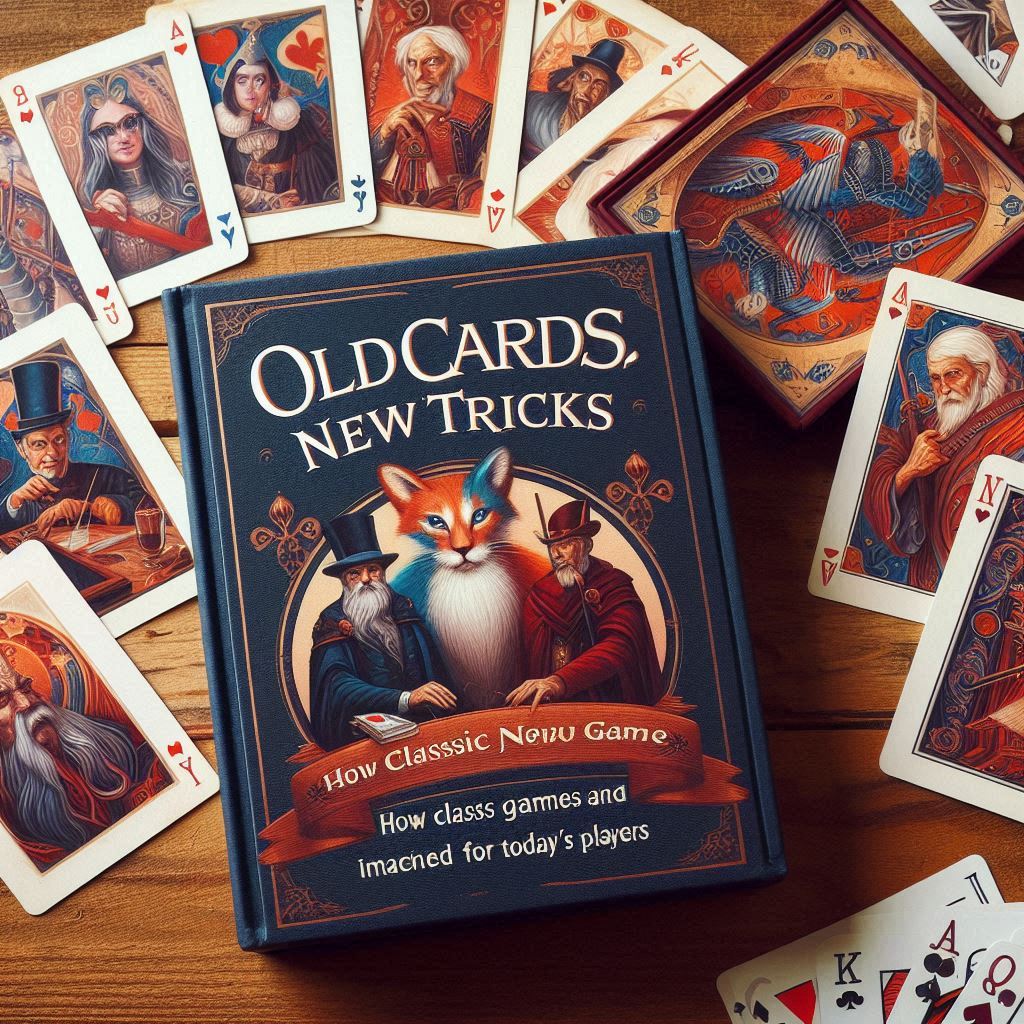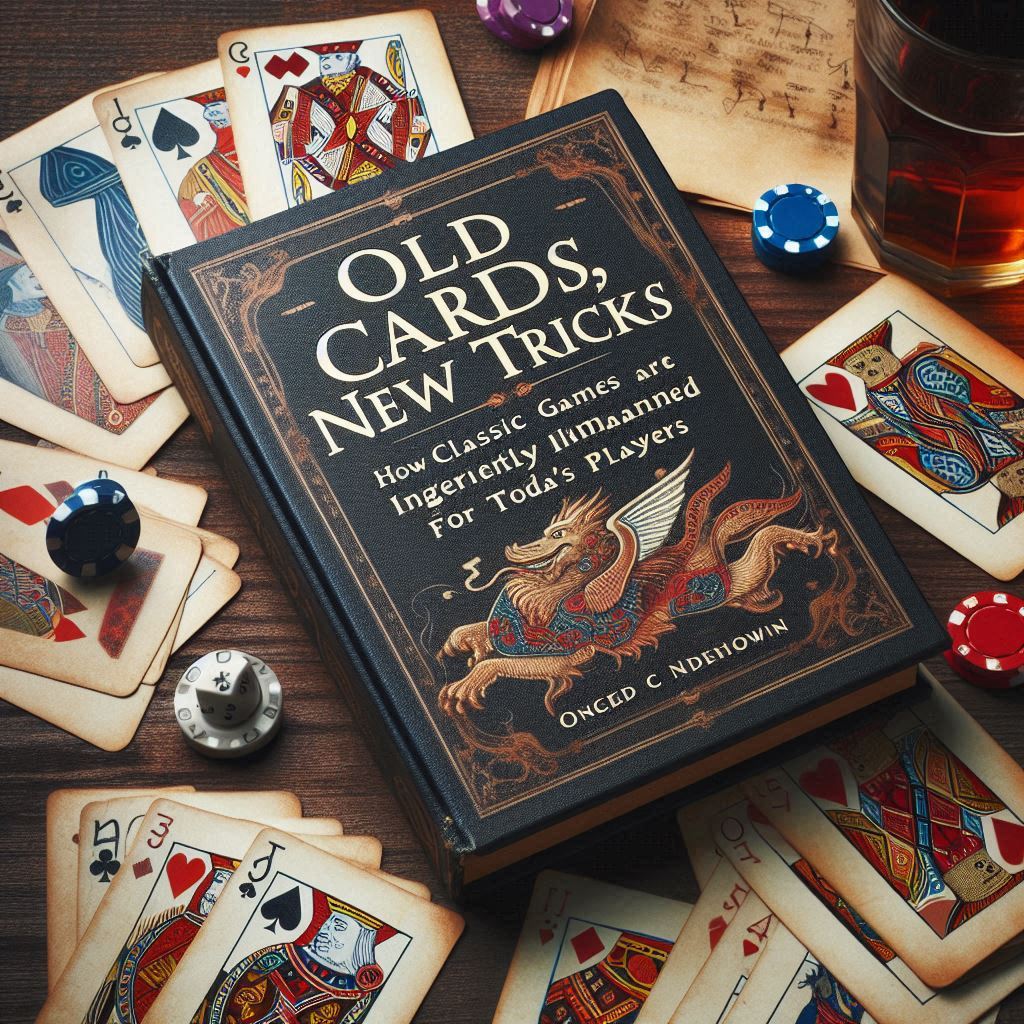ueno-kohsei.com – Classic Games have long held a cherished place in the cultural and social fabric of societies around the world. From the strategic depths of Bridge to the fast-paced thrills of Poker, these games have captivated players for generations. However, as technology advances and new generations seek different forms of entertainment, these timeless games have been ingeniously reimagined to capture the interest of today’s digital-savvy players. This article explores how classic card games are being revitalized through innovative adaptations, ensuring they remain relevant and exciting in the modern era.
Digital Platforms and Online Play:
One of the most significant transformations for classic games has been their transition to digital platforms. This shift has not only made these games more accessible but also introduced them to a global audience.
- Online Multiplayer Features: Platforms like Tabletopia and digital versions of games like Uno allow players from different geographical locations to play together in real-time, fostering a sense of community and competition.
- Mobile Gaming Apps: Apps for games such as Spades, Solitaire, and Rummy offer portable and convenient options for gaming on the go, complete with user-friendly interfaces and robust AI opponents for solo play.
Rule Variations and New Game Classic Games Modes:
To keep classic games fresh and engaging, developers have introduced new rule sets and game modes that add an unexpected twist to traditional gameplay.
- Speed and Time Modes: Speed versions of traditional card games challenge players to think and act quickly, appealing to those who enjoy fast-paced gameplay.
- Themed Variants: Many classic card games now feature themed versions that incorporate narratives, characters, and unique aesthetics, enhancing the visual appeal and immersion.


Integration with Social Media:
Social media platforms have become a new arena for Classic Games, blending social interaction with gaming.
- Sharing Achievements: Players can share their victories and high scores on social networks, increasing the games’ visibility and encouraging friendly competition among friends.
- Interactive Tournaments: Some platforms host live tournaments and leaderboard challenges that are promoted through social media, increasing engagement through competitive play.
Augmented Reality (AR) and Virtual Reality (VR):
Emerging technologies like AR and VR are beginning to influence how traditional Classic Games are played, offering a more immersive and interactive experience.
- Virtual Reality Poker Rooms: Platforms like PokerStars VR create a lifelike poker room experience, where players can interact with each other and the environment in real-time, mimicking the physical experience of sitting at a poker table.
- AR Card Games: AR technology allows players to see digital card games come to life on tabletops through their phones or AR glasses, adding a novel dimension to gameplay.
Educational and Skill Development Features:
New versions of Classic Games often include tutorials, tips, and progressive difficulty levels, which help new players learn strategies and refine their skills.
- Skill-Based Matchmaking: Advanced algorithms match players with opponents of similar skill levels, ensuring fair play and helping players improve gradually.
- In-Game Analytics and Statistics: Some digital platforms provide players with detailed analytics of their gameplay, offering insights into their decision-making processes and areas for improvement.
Conclusion:
The reinvention of classic games for the modern era is a testament to their enduring appeal and versatility. By embracing new technologies and innovative gameplay modifications, these age-old games continue to engage and entertain players across all ages and backgrounds. Whether through a VR headset, a smartphone app, or a social media platform, classic card games are finding new ways to thrive, ensuring that they remain beloved for generations to come.
FAQs
1. What are some examples of classic card games that have been reimagined for today’s players?
Several traditional Classic Games have been refreshed with new rules, formats, or themes to appeal to contemporary players. Examples include:
Solitaire: Beyond the classic version, there are now numerous variants like Spider Solitaire, Pyramid, and TriPeaks, which offer different challenges and strategic complexities.
Poker: Variants like Texas Hold’em and Omaha have gained prominence, and innovative online formats like fast-fold poker keep the game exciting for new generations.
Bridge: Apps and online platforms now offer tutorial modes and AI opponents to help beginners learn and practice the game more easily.
2. How are digital platforms enhancing the experience of classic card games?
Digital platforms are revolutionizing how classic games are played by introducing:
Online Multiplayer Features: Allowing players from around the world to compete against each other, increasing accessibility and competition.
Variants and Customizations: Offering various rules and customization options that help keep the games fresh and engaging.
Interactive Tutorials: Helping new players learn at their own pace with guided instructions and tips.
Progress Tracking and Rewards: Encouraging continued play with achievements, leaderboards, and in-game rewards.
3. What role does technology play in the evolution of traditional card games?
Technology plays a crucial role in the evolution of Classic Games through:
Augmented Reality (AR) and Virtual Reality (VR): These technologies create immersive gaming experiences, making players feel like they are sitting at a real card table.
Artificial Intelligence (AI): AI opponents adapt to the player’s skill level, providing a suitable challenge without the need for human opponents.
Mobile Gaming: Apps allow players to enjoy their favorite card games on-the-go, ensuring that they can play anytime and anywhere.
4. Can you give an example of a traditional card game that has seen increased popularity due to its digital adaptation?
Uno is a great example of a traditional Classic Games that has experienced renewed popularity through its digital adaptation. The digital versions of Uno incorporate various new rules and exciting power-ups, making it accessible and appealing to a broad audience, including both seasoned players and newcomers. The game’s presence on mobile platforms and social media has also facilitated its widespread adoption.
5. What future trends might influence how classic card games are played and perceived?
Future trends that could influence the evolution of classic card games include:
Social Gaming: As online multiplayer games continue to rise in popularity, more social features and community-driven aspects are likely to be integrated into classic card games.
Streaming and Spectatorship: With the growth of platforms like Twitch and YouTube, more card games might feature spectator modes or tournaments that are fun to watch, making them more engaging both to play and to observe.
Gamification: Incorporating elements from video games, such as story modes, character leveling, and in-game economies, can make classic games more engaging and offer a deeper, more immersive experience.
